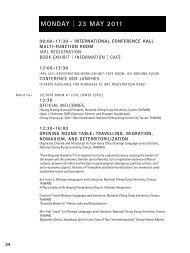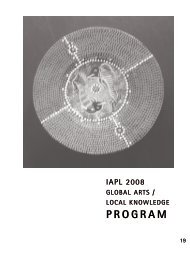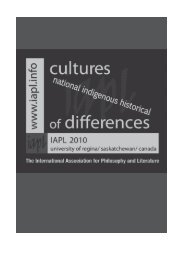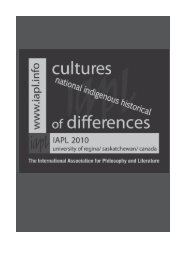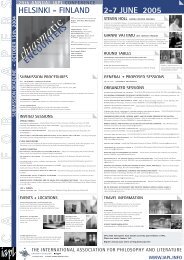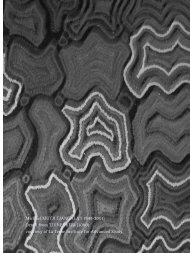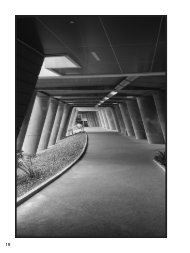IAPL2012-CB-0531-052.. - The International Association for ...
IAPL2012-CB-0531-052.. - The International Association for ...
IAPL2012-CB-0531-052.. - The International Association for ...
Create successful ePaper yourself
Turn your PDF publications into a flip-book with our unique Google optimized e-Paper software.
CLOSE ENCOUNTER<br />
VELJO TORMIS<br />
TALLINN UNIVERSITY, M-649<br />
SATURDAY, 2 JUNE<br />
09:00-12:00<br />
Veljo Tormis (b.1930), one of the most prominent<br />
Estonian composers, is a master of large-scale choral<br />
composition. Be it his monumental song cycles or<br />
extensive dramatic choral works, Tormis’s colourful,<br />
nearly orchestral style of writing <strong>for</strong> voices is always<br />
remarkable.<br />
Veljo Tormis was the firstborn son of a musicloving<br />
farmer, who became the köster (i.e. organist<br />
and precentor) at the parish church of Vigala, west<br />
Estonia, when Veljo was 6 years old. His father<br />
conducted the local choir, rehearsals took place at their home, his mother singing<br />
among altos. This early experience of choral life, involvement with national ideas and<br />
feelings related to the Estonian choral movement, was certainly important <strong>for</strong> the<br />
future composer. In the age of 12 Veljo Tormis came to Tallinn to study organ at the<br />
Conservatory. That was war-time, two years be<strong>for</strong>e the Soviet invasion connected<br />
Estonia to the Soviet Union <strong>for</strong> the coming 50 years. <strong>The</strong> organ class, traditionally<br />
related to church service, was closed, and <strong>for</strong> a year Tormis studied choral conducting.<br />
In 1951 he continued his studies as a composer at the Moscow Conservatory with<br />
professor Vissarion Shebalin, graduating in 1956. Shebalin supported his student’s<br />
interest in national style based on the use of folk music. However, the breakthrough<br />
of modern composition techniques and antiromantic attitude towards folk music took<br />
place between 1960-1965 as a result of his acquaintance with authentic sound and<br />
rhythm of peasant songs at some remote Estonian villages, impressions of the music<br />
by Carl Orff in the late 1950s, and analysis of choral music by Zoltán Kodály after a<br />
visit to Hungary in 1962. In the end of the decade Tormis finished his first great cycle<br />
“Estonian Calendar Songs” (1967) <strong>for</strong> a male and a female chorus in which the primeval<br />
enchanting power of ancient folk tunes used as the material <strong>for</strong> original choral songs<br />
was fully exposed.<br />
In Estonian culture choral music has had outstanding role as a popular movement<br />
of amateur choruses with all-national song festivals in every five years, a movement<br />
82



